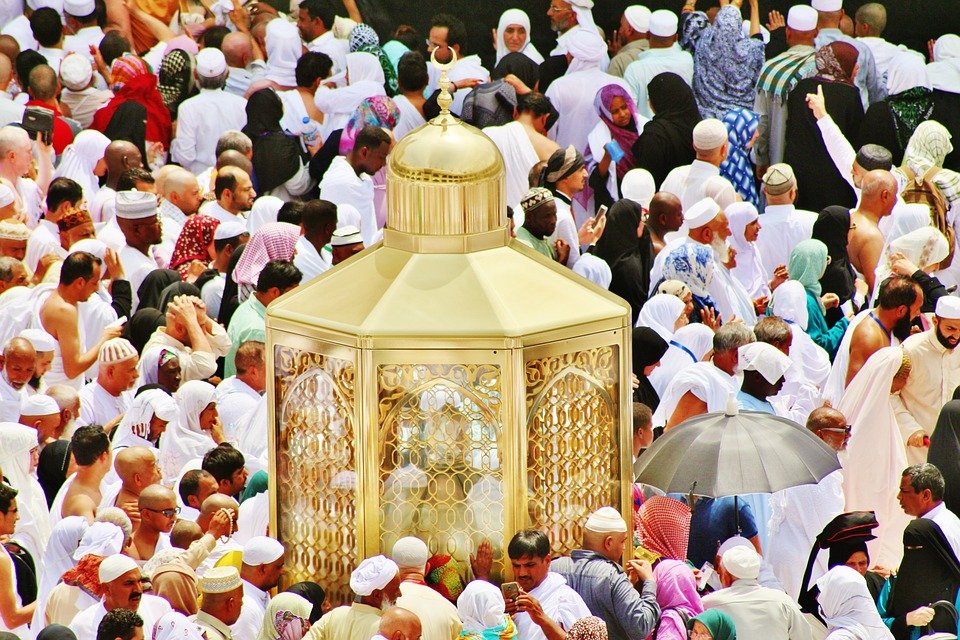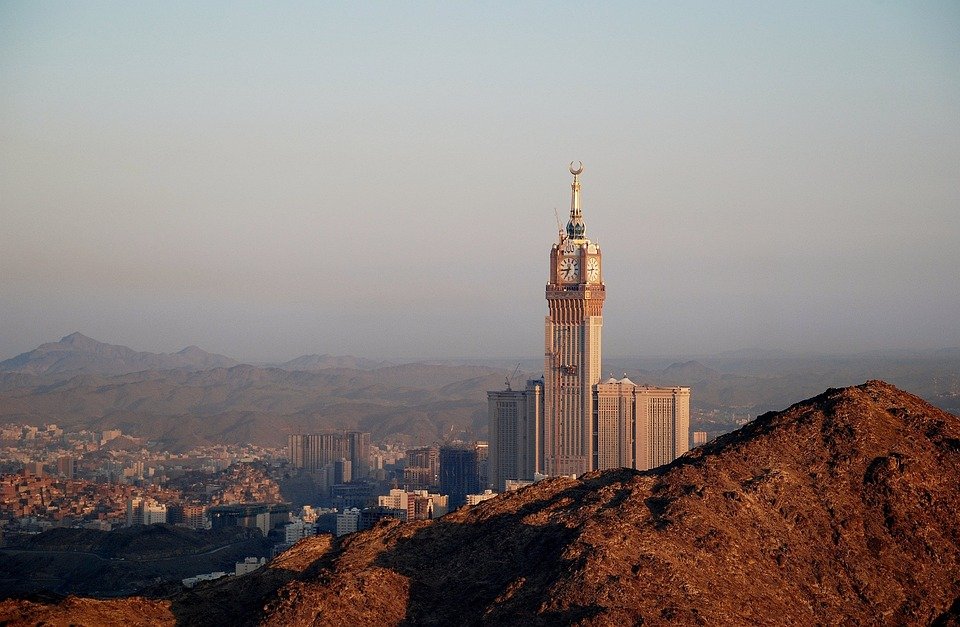You are here to read: How Do I Perform Hajj: Step-by-Step Guide for Pilgrims – A Thoughtfully Written Guide Offering Spiritual Wisdom and Travel Advice for Every Pilgrim who is going on holy journey of Hajj or Umrah.
When considering the question, “how do I perform Hajj?”, you take a significant step toward understanding one of the five pillars of Islam. This sacred pilgrimage to Mecca serves as a profound spiritual experience for millions of Muslims worldwide. In this article, I promise to guide you through the essential steps of performing Hajj, ensuring you grasp all the nuances and requirements involved. From the initial preparations to the rituals performed in Mecca, you will find a comprehensive overview that will help you feel confident in your approach.
The significance of knowing “how do I perform Hajj” cannot be overstated. For many, it represents a lifelong ambition, filled with spiritual rewards and personal growth. Our team at Airlinkhajjandumrah.com, with nine years of experience in the Umrah and Makkah travel field since 2016, genuinely understands the intricacies involved. We aim to provide you with a thorough “How Do I Perform Hajj: Step-by-Step Guide for Pilgrims,” drawing on our expertise to ensure you are well-prepared for this transformative experience. I feel that by understanding each aspect of Hajj, you will cultivate a deeper appreciation for its importance in your faith.
How Do I Perform Hajj: Step-by-Step Guide for Pilgrims
Understanding Hajj: A Sacred Duty
Hajj is a special pilgrimage that every Muslim must complete at least once in their lifetime, if they are able. It takes place in the twelfth month of the Islamic calendar, known as Dhu al-Hijjah. Hajj is not just a trip; it’s a time of spiritual rejuvenation and reflection. Millions of people from all over the world gather in Mecca to perform this sacred act, renewing their commitment to faith and community.
During Hajj, pilgrims engage in a variety of rituals that help them grow spiritually. These rituals have roots in history and are filled with meaning. They remind us of the values of humility, equality, and devotion. By participating in Hajj, we understand more about ourselves and our place in the world. This pilgrimage offers an opportunity to ask for forgiveness, seek guidance, and deepen our connection to God.
Preparing for Hajj: Getting Ready
Before you set out for Hajj, preparation is essential. It’s crucial to learn about the rites and rituals. Knowing what to expect while in Mecca will help reduce stress and allow you to focus on your spiritual experience. Gathering the necessary documents, including your passport and possibly a visa, is the first step. Many pilgrims also choose to attend workshops or read books on Hajj to familiarize themselves with the teachings.
Packing your bags wisely is another vital part of preparation. Comfortable clothing that allows ease of movement is a must. Pilgrims usually wear simple white garments, called Ihram, that signify purity and equality. Moreover, it’s a good idea to bring along personal items like toiletries, a prayer mat, and a small first-aid kit. Preparing mentally and spiritually is just as important. Take time to pray, reflect, and set your intentions for this significant experience.
Entering Ihram: The Sacred State
Once you arrive near Mecca, you’ll enter a state known as Ihram. This state signifies purification and shows your readiness for Hajj. Before entering Ihram, perform a ritual washing called Ghusl to cleanse your body. After this, put on the simple white garments. While in this state, certain activities are prohibited, such as cutting hair or nails, as they symbolize a time of sacrifice and humility.
You're at the middle of this awesome post at AirlinkHajjandUmrah.com through: How Do I Perform Hajj: Step-by-Step Guide for Pilgrims. Keep reading, it gets better!
As you don the Ihram, make a heartfelt intention or "niyyah" for the pilgrimage. This intention is very important, as it centers your mind and spirit for the upcoming rituals. The act of wearing Ihram also creates a sense of equality, as everyone around you is dressed similarly, regardless of their background. This experience brings a community spirit to the pilgrimage that is deeply rewarding.
Performing Tawaf: Circumambulating the Kaaba
One of the first rituals in Hajj is Tawaf. This involves walking in circles around the Kaaba, a cube-shaped structure at the heart of the Grand Mosque in Mecca. When you arrive, take a moment to admire the Kaaba and feel its significance. Then, begin your counterclockwise walk around it, completing seven circuits while reciting prayers or verses from the Quran.
The act of Tawaf symbolizes the unity of believers in the worship of the One God. As we walk, we feel the energy and devotion of thousands of pilgrims surrounding us. It’s not merely a physical act but a deeply spiritual one filled with meaning. Completing Tawaf creates a sense of connection, not just with God, but with fellow pilgrims who share this transformative experience.
Standing at Arafat: The Day of Forgiveness
The second day of Hajj is called the Day of Arafah, and it holds immense significance. On this day, you’ll stand in earnest prayer and reflection at the Plain of Arafat. This ritual allows for deep communication with God, where you can ask for forgiveness and guidance. It is said that the best supplication is made on this day.
Spending the afternoon at Arafat is essential, as many feel it is the pinnacle of their Hajj experience. As you stand there, surrounded by fellow believers, feel the sense of shared hope and devotion in the air. Remember to pray sincerely and tirelessly during this time, as it is believed that the gates of heaven are wide open. This day allows for personal reflection and growth, deepening your understanding of faith and devotion.
The Ritual of Muzdalifah: A Night Under the Stars
After Arafat, you will head to Muzdalifah for an overnight stay. This experience involves gathering pebbles for the next day’s ritual. Spending the night in the open provides a moment of tranquility. You’ll sleep under a blanket of stars, surrounded by companions who share your faith. It’s a beautiful way to connect with both nature and each other.
During this evening, take part in prayers and share stories with fellow pilgrims. The atmosphere at Muzdalifah encourages bonding and camaraderie, allowing you to reflect on the events of the day. The simplicity of this time under the night sky highlights the beauty of unity among believers. As morning approaches, prepare yourself spiritually for the next part of the pilgrimage.
The Stoning of the Devil and Eid al-Adha
As Hajj continues, you will perform a ritual known as the Stoning of the Devil. This act symbolizes casting away negativity and temptation. Collect the pebbles you gathered in Muzdalifah and throw them at three pillars that represent the devil. This act is a powerful way to reaffirm your commitment to righteousness and faith.
Following this, the festival of Eid al-Adha, or the Feast of Sacrifice, begins. Traditionally, families will sacrifice an animal to commemorate the willingness of Prophet Ibrahim to sacrifice his son in obedience to God. Sharing this meal with those in need fosters a sense of community and generosity. This part of Hajj encapsulates the themes of sacrifice, unity, and compassion, making it an unforgettable experience.
Conclusion: Reflecting on the Pilgrimage
Completing Hajj is a monumental achievement and leaves an indelible mark on your life. This pilgrimage is much more than just a series of rituals; it’s a transformation that affects the heart and soul. The lessons learned during Hajj resonate long after the pilgrimage ends, guiding your interactions and decisions.
After returning home, take time to reflect on your experiences. Consider how you can incorporate the lessons of patience, empathy, and gratitude into your everyday life. Hajj serves as a powerful reminder of our shared humanity and spiritual connection. Carry these insights forward, and may your heart continue to shine brightly with faith and devotion.
That wraps up How Do I Perform Hajj: Step-by-Step Guide for Pilgrims. Thanks for sticking with us till here! Share this: How Do I Perform Hajj: Step-by-Step Guide for Pilgrims with your friends.
Check our homepage at Air Link Hajj & Umrah for more awesome updates.
Some interesting posts are: 1: Umrah Mubarak, 2: When is Umrah closed 2026?, 3: When does Umrah start after Hajj 2026?
Mushu, an experienced Saudi Arabia traveler and writer, shares insightful tips and spiritual reflections to enhance Hajj and Umrah journeys for fellow pilgrims. He has been to Makkah and Madina from 2016 to 2023 many times and his posts will reflect this.







